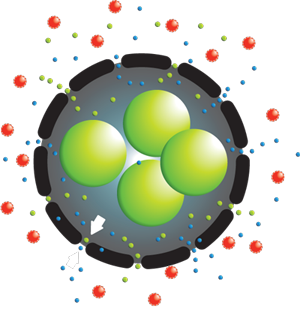Potential Breakthrough in Encapsulation Technology
JDRF-funded researchers develop novel method of protecting islets for implantation into people with type 1 diabetes
Pancreatic islet transplantation has restored insulin independence in some individuals with type 1 diabetes (T1D), but the procedure is not widely available due to the limited supply of donated islets and the need for strong immunosuppressive drugs to prevent rejection of the transplanted cells. JDRF’s encapsulation research program is designed to overcome these hurdles by making implantable cell replacement therapy without the need for antirejection drugs widely available. While a market-ready encapsulated cell therapy for treating T1D is still a ways off, JDRF is helping to develop of a variety of promising encapsulation concepts. Progress towards clinical trials on one encapsulation concept was recently announced by JDRF partner ViaCyte. This macroencapsulation technique protects replacement cells in a single implantable device.
JDRF is also supporting the development of novel encapsulation technologies for use in future-generation encapsulation products. One such potential encapsulation technology breakthrough was recently reported in the Proceedings of the National Academy of Sciences by JDRF-funded investigator Dr. Alice Tomei from the University of Miami. Instead of protecting beta cells or islets in a macroencapsulation device, this process encases individual islets with a thin protective film – like shrink wrapping individual cells, but on a microscopic level. This microencapsulation technology gets the cells in closer contact with the body making transport of nutrients and oxygen more efficient and hopefully, as a result, improving cell survival and functioning. The material used for the special coating is a gel-like material, similar to a porous contact lens. This coating has been shown to support the survival and normal functioning of transplanted mouse islets.
The next step is to test whether the coating can protect the cells from both the T1D autoimmune attack and the immune system’s attack on the transplanted materials. “Pancreatic islets are the most sensitive cells that I have worked with, and keeping them happy while enclosing them in a protective bubble is a very hard task,” said Dr. Tomei. Animal studies with the novel coating are ongoing so human tests are likely still years away.
For more information or to support JDRF’s encapsulation research program, please click here.
Microencapsulated Islets Macroencapsulation Concept

